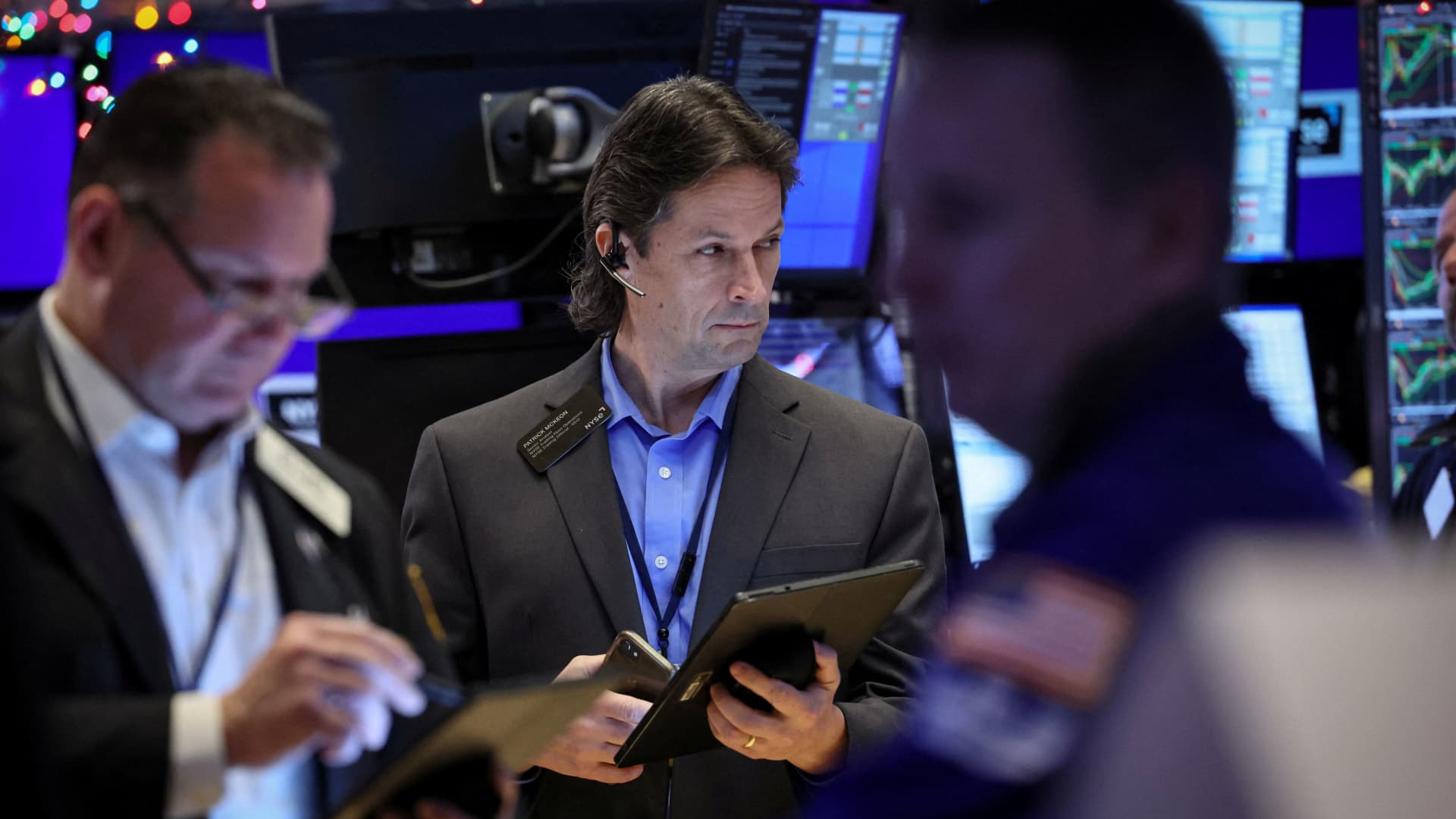
As stocks try to regain their footing after a rough start to 2024, history suggests there could be further choppiness ahead. All three major averages are down to start the year. A powerful rally at the end of 2023, following a dovish pivot from the Federal Reserve, has investors worrying that stocks were overbought. So far in January, mega-cap tech stocks such as Apple have faltered, down more than 3%, while health-care stocks, which were last year’s laggards, have outperformed. The Nasdaq Composite is down 1% this year. If history is to be believed, that volatility could continue for some time. In fact, a review of data going back to 1971 shows markets do not bottom until after the Federal Reserve starts cutting rates, according to a note from Gary Schlossberg, global strategist at Wells Fargo Investment Institute. “If the relationship holds, then what it’s saying is that between now and when the Fed will be making that first interest rate cut — and we think that won’t occur until probably late spring or around the middle of the year, that’s our best guess at this point — you could expect to see some market volatility,” Schlossberg said. “The market could be vulnerable to setbacks from time to time,” Schlossberg continued. “It’s only when you see that sustained decline in interest rates that that sets the stage for an economic recovery.” The most impressive stock rally following a Fed rate cut was in the mid-90s, following the first of six rate cuts in July 6, 1995, that brought the federal funds rate to below 5% from 6%. In 1995, the S & P 500 rallied 34%, and in 1996, it advanced another 20%. “Perhaps not so coincidentally, 1995 also was the most visible year of a soft landing, attributable, at least in part, to the timely pivot by the Fed toward easing,” Schlossberg wrote in an email. Currently, markets are pricing in a more than 60% likelihood the Federal Reserve will cut rates in March, according to the CME FedWatch Tool that uses interest rate futures to calculate a consensus. But those expectations are too lofty, in Schlossberg’s view, as he anticipates the Fed won’t ease policy until closer to the middle of the year. While the strategist anticipates the S & P 500 will end the year higher, he said it will be a “tale of two halves” — in other words, a weak first half of the year as the economy slows down, followed by a growth recovery in the second half after rate cuts are implemented. “We think that we’re going to see a saucer shaped cycle where things wind down gradually, and then we have a moderate or mild economic recovery,” he said. For the first half of the year, the strategist advised investors to focus on liquidity in large-cap stocks, stick to quality companies and add exposure to defensive parts of the market such as health care. In the second half of the year, he’s looking to allocate more into economically sensitive equities, such as small caps, as well as adding exposure to industrials, plus stocks tied to the housing sector. — CNBC’s Gabriel Cortes contributed to this report.
